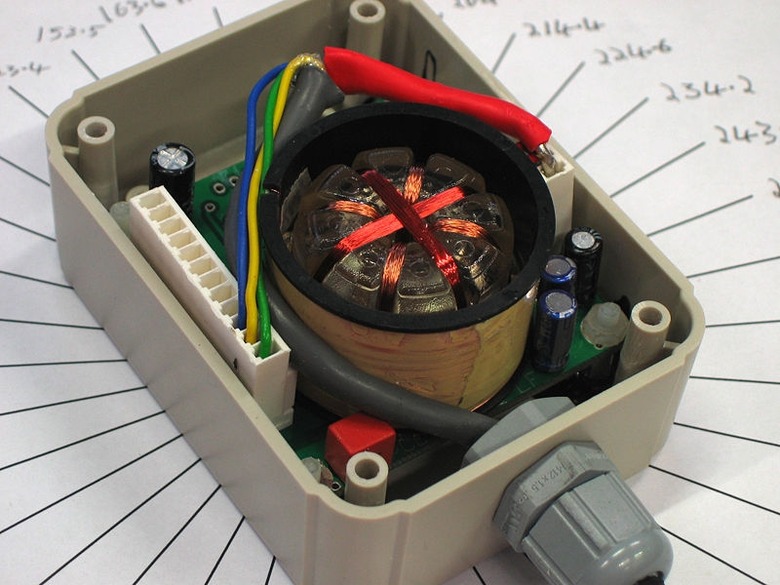How Does A Magnetic Sensor Work?
Magnetic Sensors
Magnetic sensors detect changes and disturbances in a magnetic field like flux, strength and direction. Other types of detection sensors work with characteristics like temperature, pressure, light. From established knowledge about the existing magnetic field and the data collected from sensors regarding changes and alterations, many things can be known. Rotation, angles, direction, presence and electrical current can all be monitored. Magnetic sensors are divided into two groups, those that measure the complete magnetic field and those that measure vector components of the field. The vector components are the individual points of the magnetic field. The techniques used to create these sensors involve various combinations of physics and electronics.
Measuring A Magnetic Field
Measuring A Magnetic Field
A magnetic field surrounds an electric current. The field is detectable by its force or interaction on electrical charges, magnets and magnetic products. The strength and direction of a magnetic field can be measured and documented. Fluctuations in that field are sensed and adjustments or changes are made in a machines response, a doctors decisions, the direction the navigational instrument gives or the response of a detection system. The Earth's magnetic field is a great example. It is measured and tracked by magnetic sensors which are part of the navigational tools that Honeywell and other corporations design and manufacture. Most magnetic sensors are used for measurement in industrial processes, navigational tools, and scientific measuring.
Magnetic Sensing Technology
Magnetic Sensing Technology
There are several types of technologies used to make a magnetic sensor work. Fluxgate, Hall Effect, magnetoresisitive, magnetoinductive, proton precession, optical pump, , nuclear precession, and SQUID (superconducting quantum interference devices) each have a different approach to using magnetic sensors. Magnetoresistive devices record electrical resistance of the magnetic field. Magnetoinductive are coils surrounding magnetic material whose ability to be permeated changes within the Earth's magnetic field. Fluxgate measures magnetic fields against a known internally created magnetic based response that runs through a continually fluxing set of parameters. Each type of technology focuses on a particular area for detection, a measurement to be detected and way of recording changes.
The Smallest Magnetic Sensor
The Smallest Magnetic Sensor
A recent discovery may allow improvements to magnetic sensors across the board. The NIST (National Institute of Standards And Technology) have revealed that combining layers of magnetic alloy with nano layers of silver increase magnetic sensitivity. Being able to use an extremely thin magnetic sensor (called thin films) is a necessity in applications found in medical devices, weapon detection and data storage.
Cite This Article
MLA
Burke, Alex. "How Does A Magnetic Sensor Work?" sciencing.com, https://www.sciencing.com/magnetic-sensor-work-5021878/. 24 April 2017.
APA
Burke, Alex. (2017, April 24). How Does A Magnetic Sensor Work?. sciencing.com. Retrieved from https://www.sciencing.com/magnetic-sensor-work-5021878/
Chicago
Burke, Alex. How Does A Magnetic Sensor Work? last modified March 24, 2022. https://www.sciencing.com/magnetic-sensor-work-5021878/
